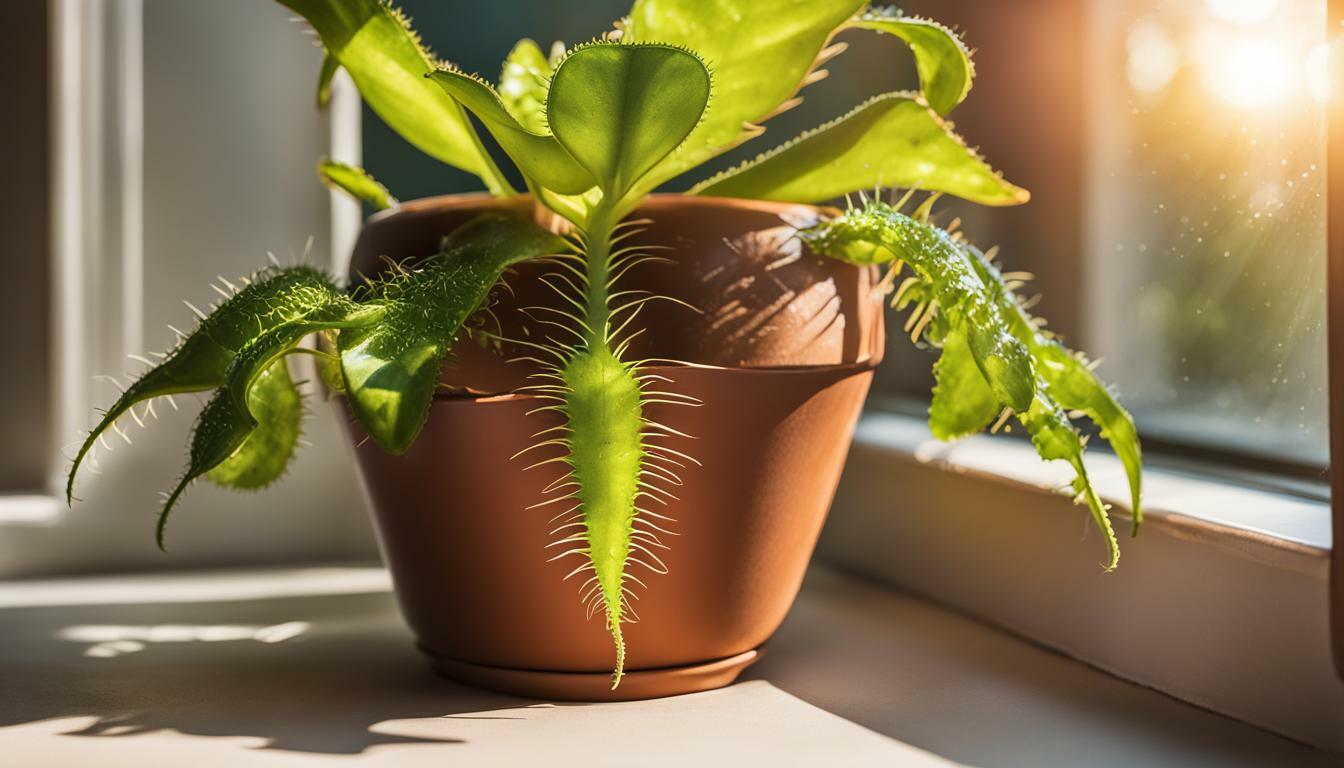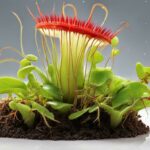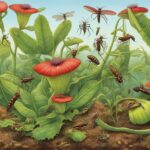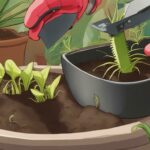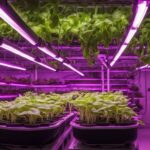If you’re an indoor gardening enthusiast, you might be wondering if you can grow Venus Flytraps in pots. The good news is, these fascinating carnivorous plants can thrive in containers if you provide the right conditions. Container gardening for Venus Flytraps offers several benefits, including greater control over their environment and protection from outdoor pests.
In this article, we’ll explore the feasibility of growing Venus Flytraps in pots, provide tips on how to successfully cultivate these plants indoors, and discuss the best care practices to keep them healthy and vibrant.
Key Takeaways:
- Venus Flytraps can be successfully grown in pots through container gardening.
- Container gardening allows for greater control over the plant’s environment and protects it from outdoor pests.
- Proper care is essential to keep potted Venus Flytraps healthy and thriving.
Tips for Growing Venus Flytraps in Pots
Are you looking to add some carnivorous charm to your indoor garden? Venus Flytraps make for fascinating houseplants and can be easily grown in pots. Here are some expert tips to help you successfully cultivate these unique plants:
- Choose the right pot: Venus Flytraps prefer shallow pots with good drainage. Look for pots that are 4-6 inches in diameter and no more than 4 inches deep. Avoid using containers with saucers to prevent the soil from becoming waterlogged.
- Select the right potting mix: Venus Flytraps thrive in acidic soil with a pH between 4.5 and 5.5. Use a mixture of sphagnum moss, perlite, and sand for optimal drainage and acidity. Avoid using potting soil or fertilizers as they can harm the plants.
- Provide adequate sunlight: Venus Flytraps require plenty of bright, direct sunlight to thrive. Place them near a south or west-facing window for at least 6 hours of sunlight per day. You can also use artificial grow lights if natural light is insufficient.
- Water carefully: Venus Flytraps are sensitive to both overwatering and underwatering. Water them with distilled or rainwater to avoid mineral buildup and let the soil dry out partially between watering. Be sure not to let them sit in standing water, as this can lead to root rot.
Following these tips and regularly monitoring your Venus Flytraps can help ensure their growth and health in a pot. Stay tuned for more insights into caring for potted Venus Flytraps in the next section.
Caring for Venus Flytraps in Pots
While Venus Flytraps are relatively low-maintenance plants, they require specific care when grown in pots. Here are some tips to keep your potted Venus Flytraps thriving:
- Provide the right soil: Use a soil mix that is low in nutrients and has good drainage. Avoid using regular potting soil as it contains too many nutrients that can harm the plants.
- Maintain high humidity: Venus Flytraps require high humidity levels, so ensure that the soil is always moist. You can place a tray with water under the pot or cover the pot with a plastic wrap to increase humidity levels. However, make sure that the plant is not sitting in water for extended periods as it can lead to root rot.
- Keep them in the sun: Venus Flytraps require at least 4-6 hours of direct sunlight every day. Place the pot in a sunny spot or use artificial grow lights if you don’t have access to bright sunlight.
- Water them correctly: Water your Venus Flytraps with distilled or rainwater. Tap water contains minerals that can harm the plants. Water them regularly but make sure the soil is not waterlogged. Allow the top layer of soil to dry out between watering.
- Don’t overfeed them: Venus Flytraps can catch their own prey, but you can feed them small insects like fruit flies. Avoid overfeeding as it can stress the plant and cause it to produce smaller traps.
- Watch out for pests: Venus Flytraps can be susceptible to pests like spider mites and aphids. Keep an eye out for any signs of infestation and treat them promptly.
By following these care guidelines, you can ensure your potted Venus Flytraps are healthy and thriving. Remember to monitor them regularly and adjust their care as needed.
Growing Venus Flytraps in Containers
Container gardening offers an array of possibilities for growing Venus Flytraps. With the right container, you can create a mini Venus Flytrap ecosystem that mimics their natural habitat.
The Benefits of Container Gardening for Venus Flytraps
One of the advantages of growing Venus Flytraps in containers is that you can regulate their growing conditions with greater precision. For example, a plastic container can retain more moisture, which is ideal for Venus Flytraps that thrive in high humidity. Similarly, you can place a potted Venus Flytrap near a sunny window or under a grow light to ensure they receive adequate sunlight.
Another benefit of growing Venus Flytraps in containers is that you can move them around as needed. If you notice that your Venus Flytrap is getting too much or too little light, you can easily relocate the container to a different spot.
Choosing the Right Container
When selecting a container for your Venus Flytrap, keep in mind that they have unique requirements. Ideally, you want a container that is shallow and wide, as Venus Flytrap roots are shallow and don’t require much depth. You can also consider a terrarium, which can provide the necessary humidity levels while also allowing you to create an attractive display of your Venus Flytraps.
For hanging baskets, ensure that they are lightweight and have drainage holes. Venus Flytraps have delicate roots that can be damaged by excess moisture. By providing drainage holes and using a well-draining potting mix, you can avoid the risk of root rot and keep your Venus Flytrap healthy.
Overcoming Potential Challenges
While container gardening provides many advantages, there are also some potential challenges to keep in mind. For example, if you are using a terrarium, make sure that you don’t over-water your Venus Flytrap. With a closed container, it’s easy to create an overly humid environment that can cause leaf rot or other issues.
Similarly, if you are growing Venus Flytraps in a hanging basket, make sure that you are using a lightweight container that won’t become too heavy when watered. Additionally, ensure that the basket is securely hung to prevent it from falling and causing damage to your plants.
By following these tips and using your creativity, you can cultivate Venus Flytraps in a variety of containers and enjoy watching these fascinating plants thrive.
Conclusion
Congratulations! You now have a greater understanding of growing and caring for Venus Flytraps in pots. By following the expert tips in section 2, you can successfully cultivate these unique plants in the comfort of your own home. Remember to pay close attention to their specific care requirements as outlined in section 3 to ensure their health and longevity.
Container gardening for Venus Flytraps, as explored in section 4, presents a versatile option for indoor gardening enthusiasts. You can experiment with different container types, from terrariums to hanging baskets, to suit your personal preference and space.
Don’t be afraid to get creative!
Try using unique and decorative pots to showcase your Venus Flytraps. Share your experiences and insights with fellow enthusiasts to continually learn and improve your gardening skills.
With the information provided in this article, you are well-equipped to successfully grow and care for Venus Flytraps in pots. Happy gardening!
What Are the Benefits of Growing Venus Flytraps in a Greenhouse Instead of Pots?
Venus Flytraps thrive when grown in a controlled environment like a greenhouse. The consistent temperature, humidity, and lighting conditions provide optimal growth conditions. Growing venus flytraps in a greenhouse protects them from extreme weather conditions, pests, and diseases. Moreover, it allows for year-round cultivation, ensuring a continuous supply of these intriguing carnivorous plants.
FAQ
Q: Can Venus Flytraps be grown in pots?
A: Yes, Venus Flytraps can be grown in pots. Container gardening is a popular method for cultivating these unique plants.
Q: What are the benefits of container gardening for Venus Flytraps?
A: Container gardening allows for greater control over the plant’s environment, including soil composition and moisture levels. It also makes it easier to protect the plants from extreme weather conditions.
Q: How do I grow Venus Flytraps in pots?
A: To grow Venus Flytraps in pots, choose a well-draining potting mix and ensure the pot has good drainage. Place the pot in a sunny location and water the plant with distilled or rainwater regularly.
Q: What care requirements should I consider for Venus Flytraps in pots?
A: When caring for Venus Flytraps in pots, it is important to maintain high humidity levels. Keep the soil damp but not soaking wet and avoid using tap water, as it can contain minerals that are harmful to the plant.
Q: Can I grow Venus Flytraps in different types of containers?
A: Yes, Venus Flytraps can be grown in various types of containers, such as terrariums and hanging baskets. Each container option has its own advantages and considerations in terms of moisture retention and airflow.

